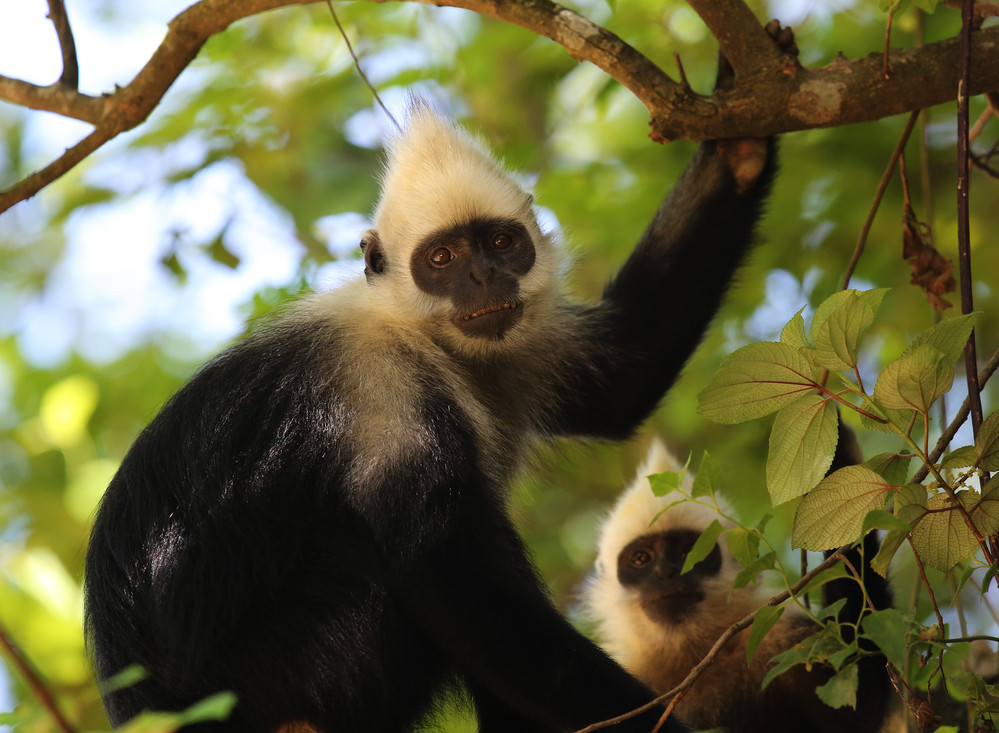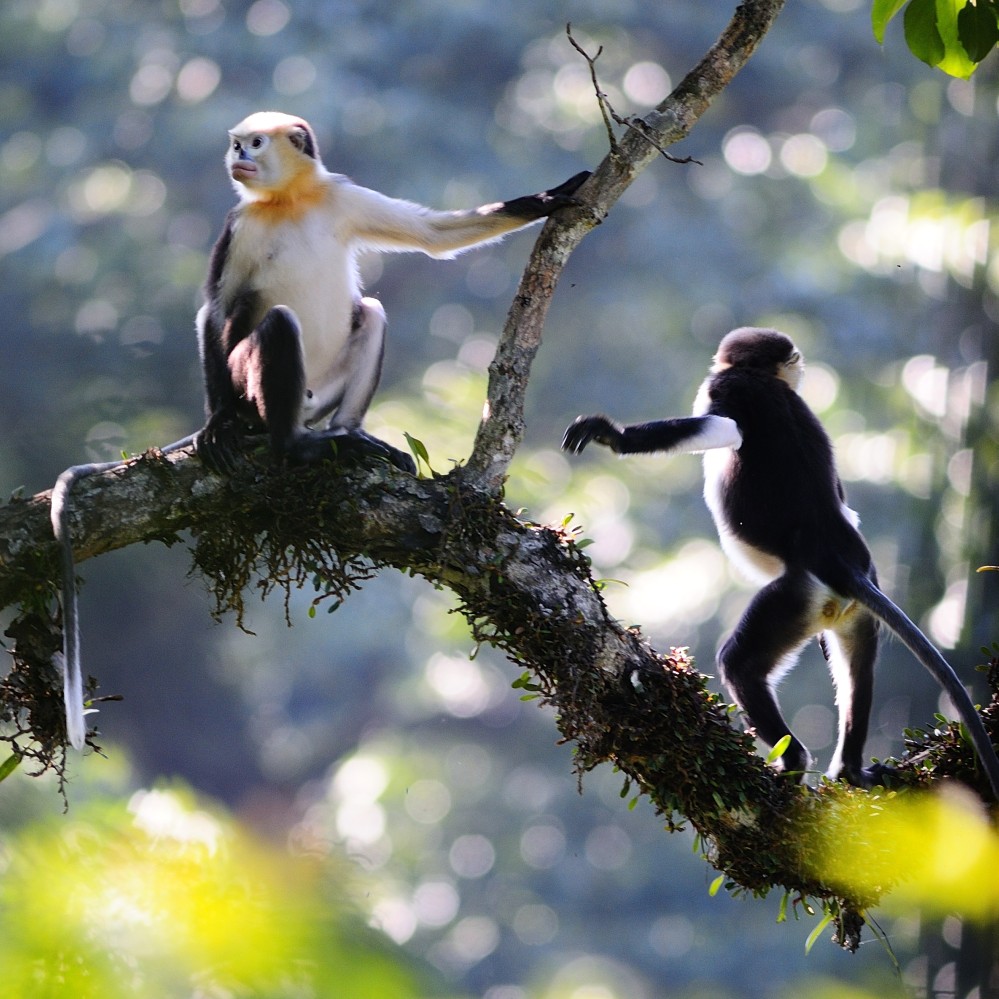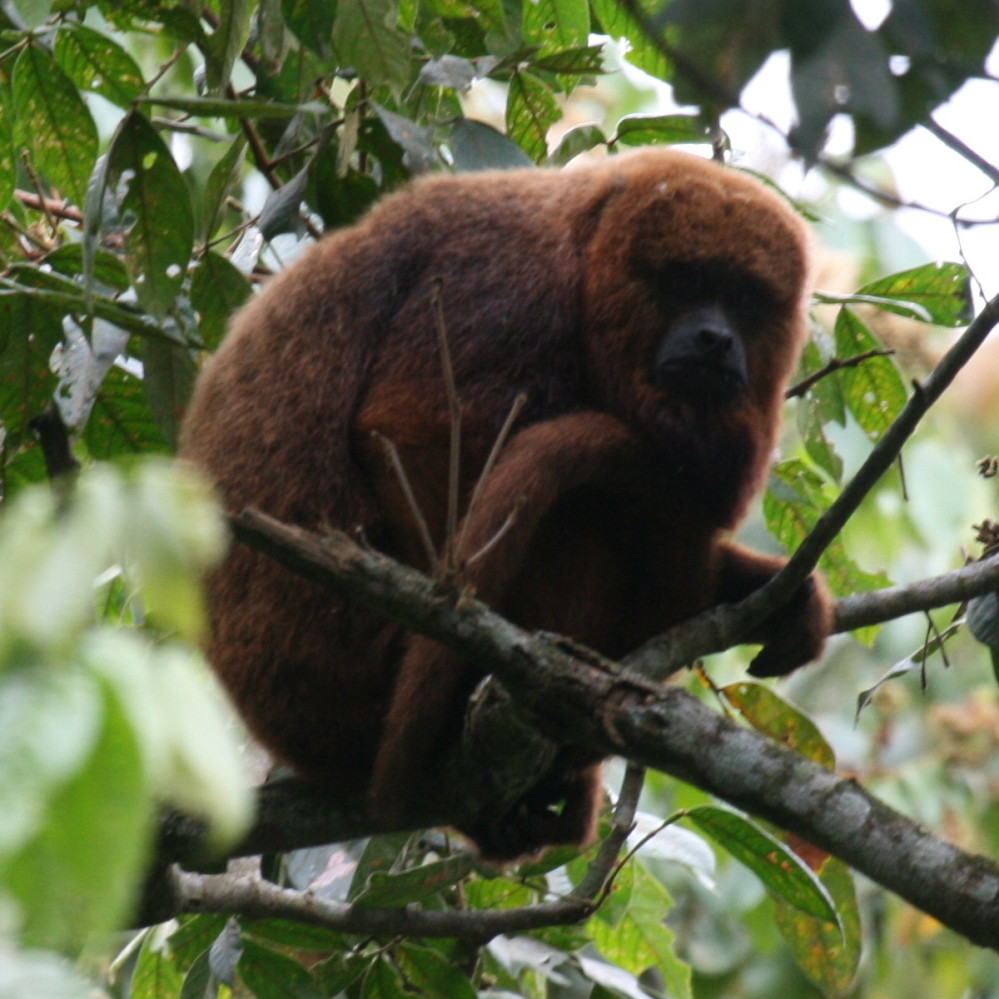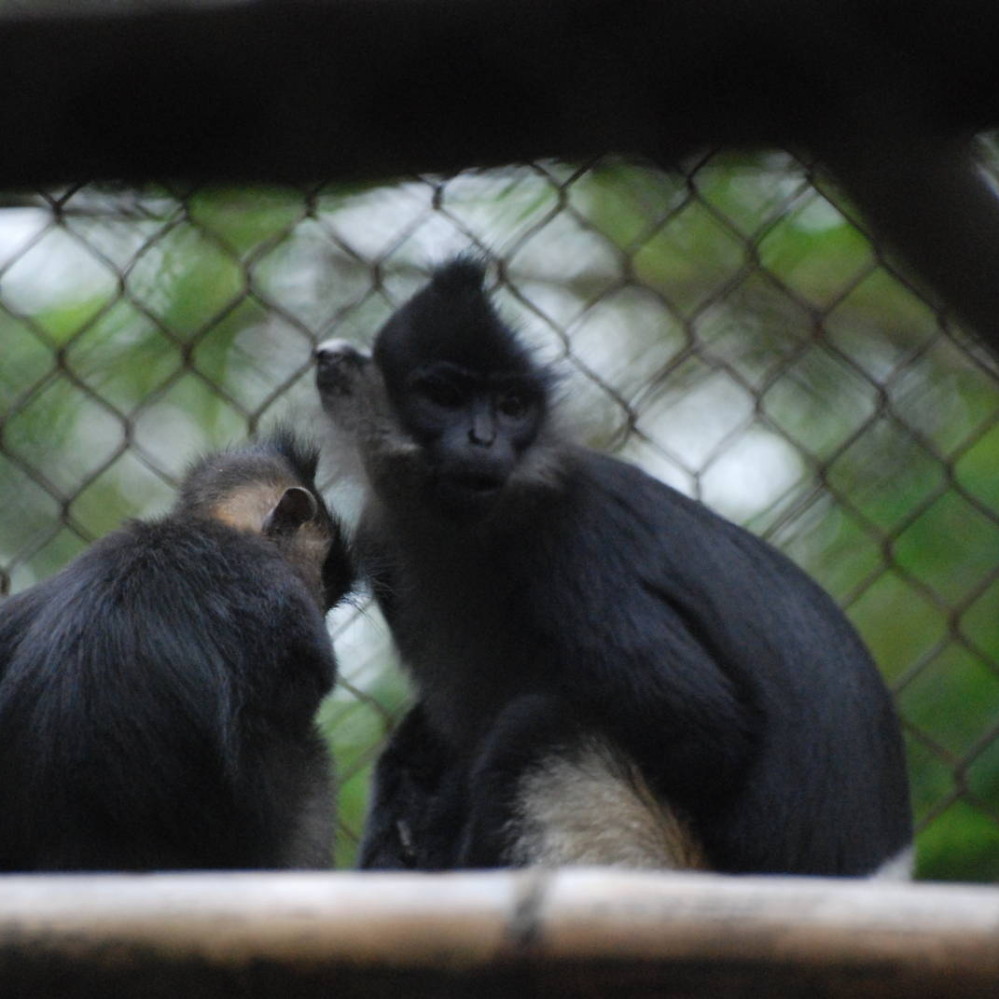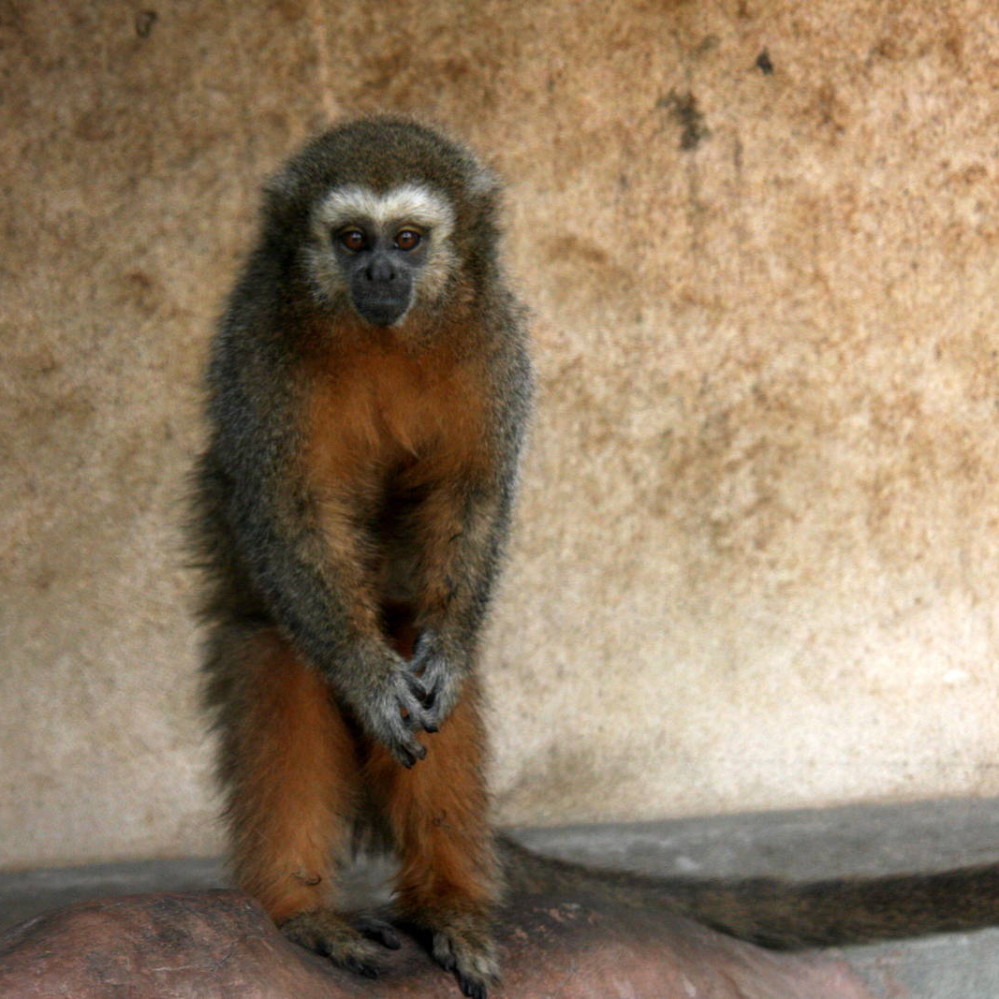Monkeys are among our favourite animals, with their comical antics and sometimes human-like behaviour. But some of our closest relatives are at risk of extinction, facing threats from human activities. As their populations decrease, they are placed in even greater danger because they are at risk of inbreeding or the chance of a natural disaster causing total extinction. These 10 species are among the most critically endangered monkeys on Earth, and will need serious conservation action to save them.
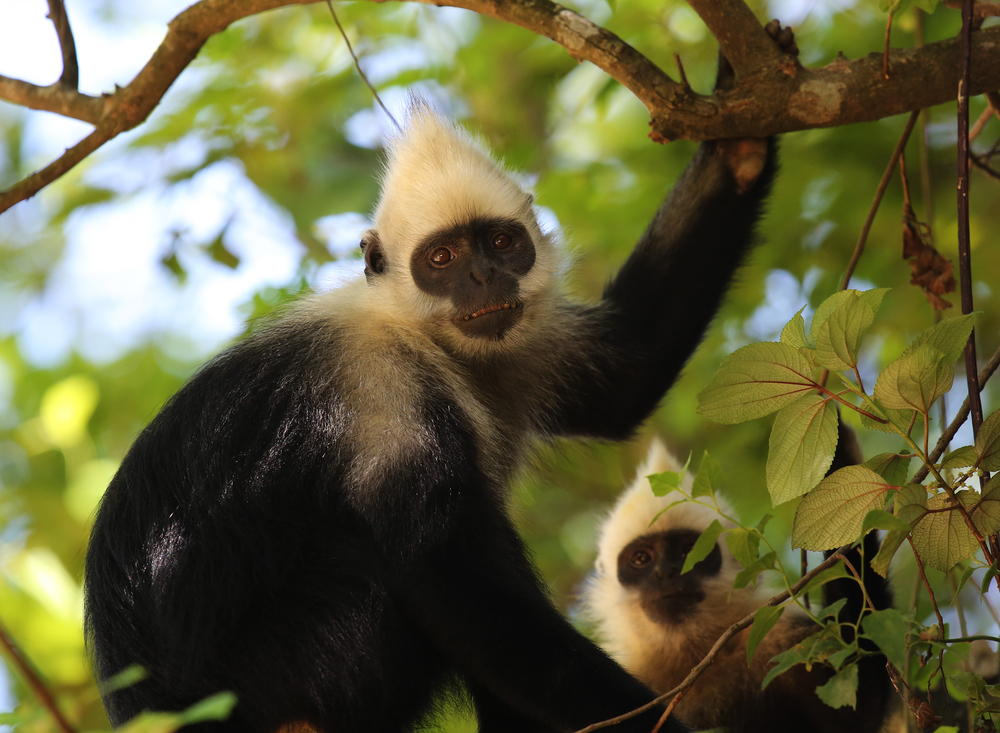
Golden-headed langur
This species is one of the rarest primates in Asia. They are found only on the island of Cat Ba in northern Vietnam, where they live in forests around limestone formations. There are less than 70 individuals remaining, and have declined by 80% over the past 36 years. This is due primarily to hunting for meat and traditional 'medicine' as well as habitat disturbance and fragmentation from the growing human population on Cat Ba, resulting from the island’s designation as a new tourism centre.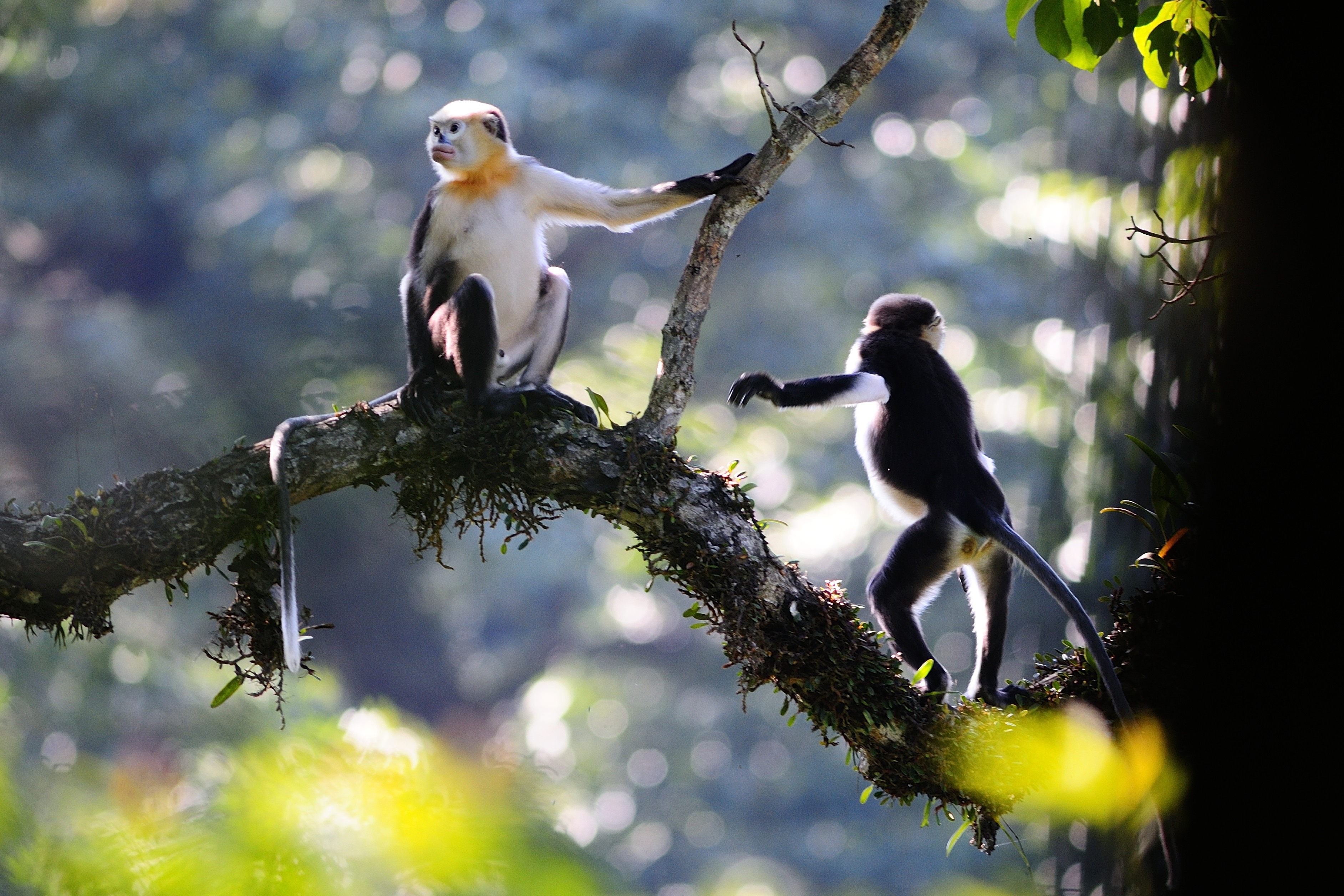
Tonkin snub nosed monkey
Also found in Vietnam, this species was believed to be extinct until its rediscovery in the 1990s. Since then, only five isolated populations have been identified and there are thought to be fewer than 200 left in the wild. It is Vietnam’s largest primate species, with a very distinctive and comical expression. They are heavily poached for food and the black market in bushmeat, and decades of an expanding human population and increasing demands for scarce agricultural lands have led to the loss of its habitat.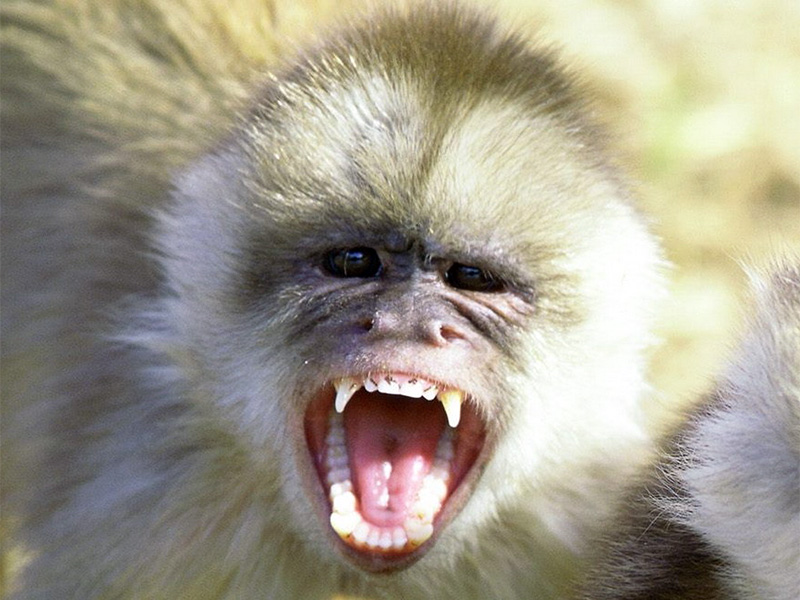
Kaapori capuchin
Endemic to Brazil, this species of capuchin lives only in the states of Pará and Maranhão on the northern Atlantic coast. These are areas of the highest human population density and the highest levels of deforestation in the entire Brazilian Amazon. Selective logging has been particularly dangerous due to the loss of trees providing fruits that are a significant component of this species’ diet. This has caused populations to plummet, but the exact number of individuals remaining is unknown.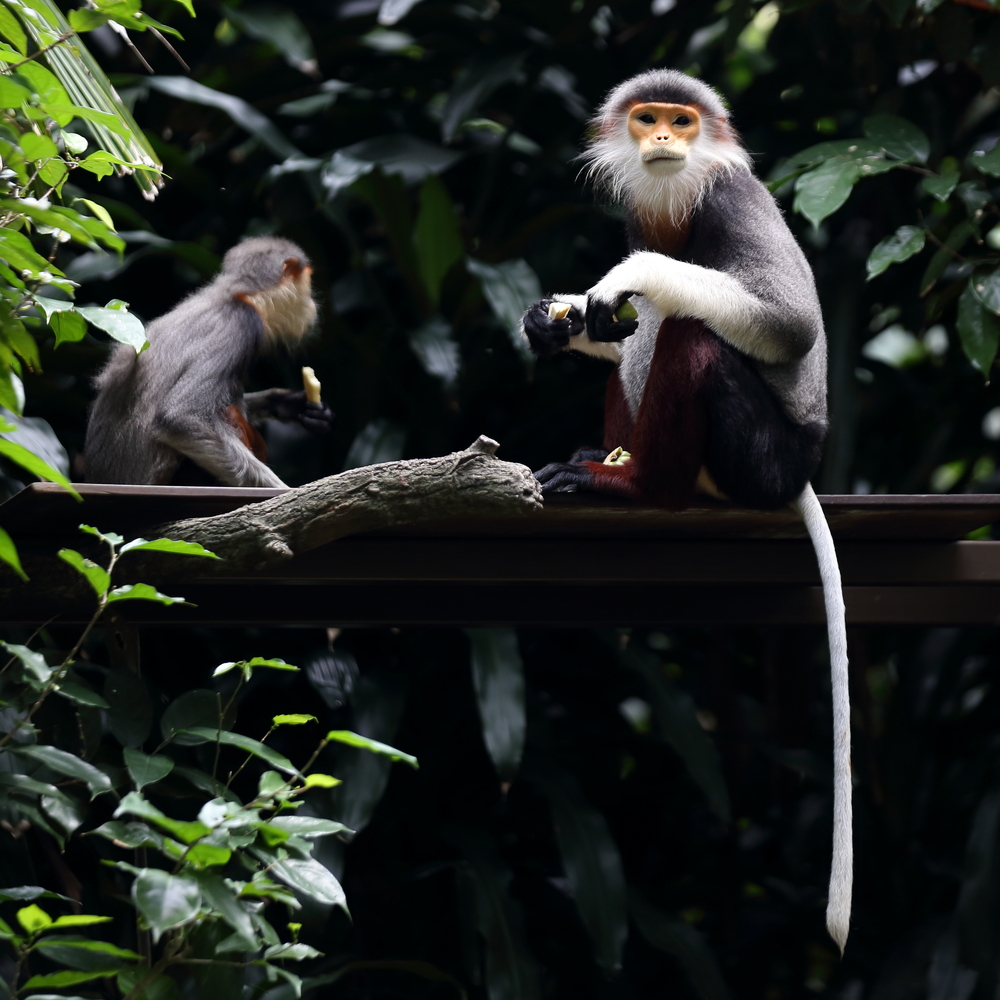
Grey-shanked douc
Native to Vietnam, a total population of 550 to 700 grey-shanked doucs remain in the wild. In the past they have lived in groups of up to 50 individuals but now numbers have been greatly reduced to between four and 15 group members. They are hunted for bushmeat and traditional 'medicine'—their bones are used to make a substance called 'monkey bone balm' which is believed to improve haemoglobin regeneration and renal function, as well as being used to treat lack of appetite, insomnia and anaemia. The adults are also killed to enable infants to be taken for the illegal pet trade.
Pennant’s red colobus
This long limbed monkey is endemic to tropical Central Africa. There are three subspecies, one found on Bioko Island in Equatorial Guinea, one in the Niger River Delta in Nigeria and one in the Republic of Congo. All three subspecies are experiencing dramatic population declines and are in danger of extinction, although exact numbers are unknown. They are threatened by the loss of their forest homes and hunting—they are easy to kill by shotgun so are commonly taken for the bushmeat market.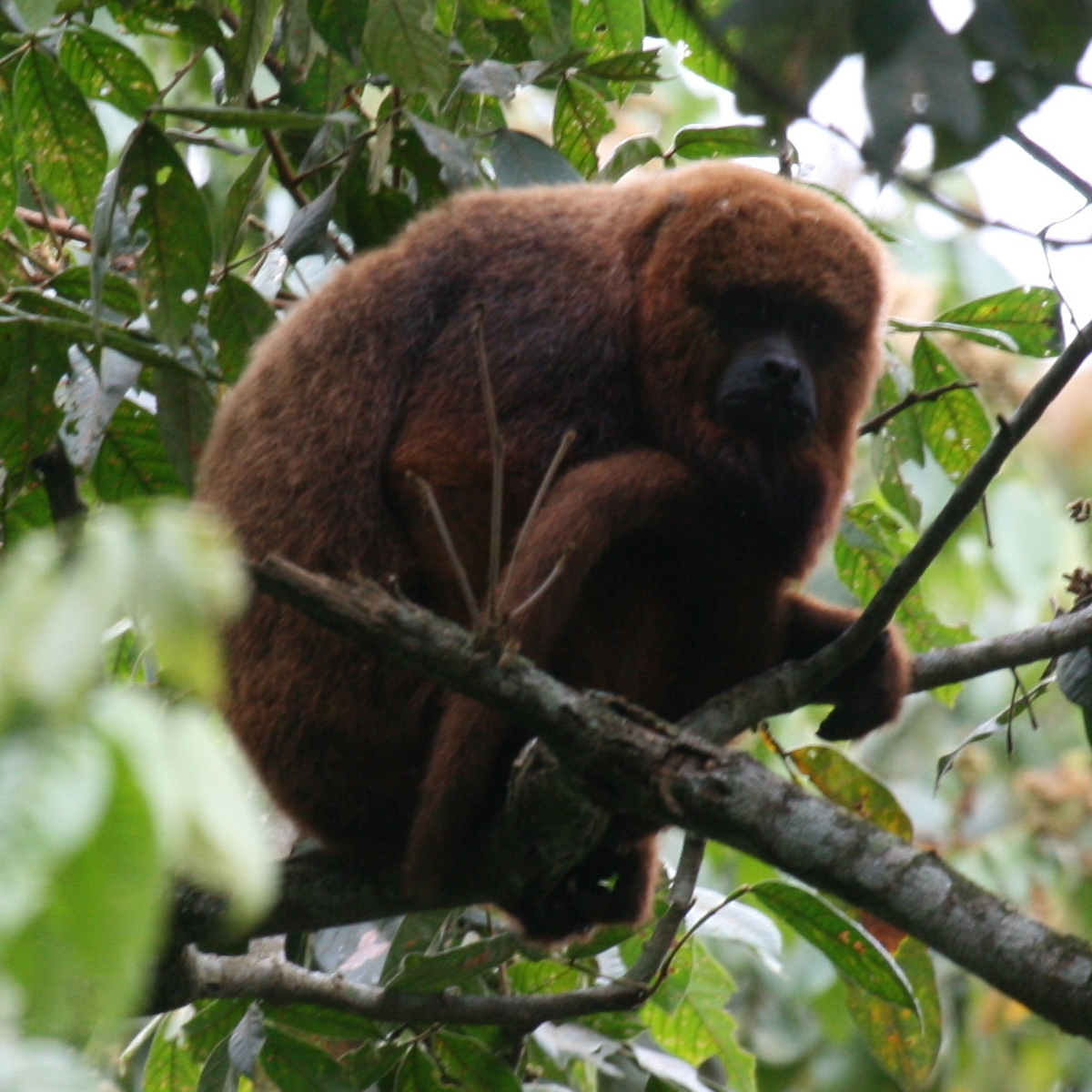
Northern brown howler
Howler monkeys are among the loudest animals in the world but you would have to be in the vicinity of the Jequitinhonha River in Brazil to hear a northern brown howler, as this is where this animal is restricted to. It is a subspecies of the brown howler monkey, and fewer than 250 individuals remain. Most howler monkeys are threatened with extinction, due to activities such as habitat loss and degradation and hunting for bushmeat, because they are a large and inexpensive source of protein. Their slow and docile nature makes them an easy target.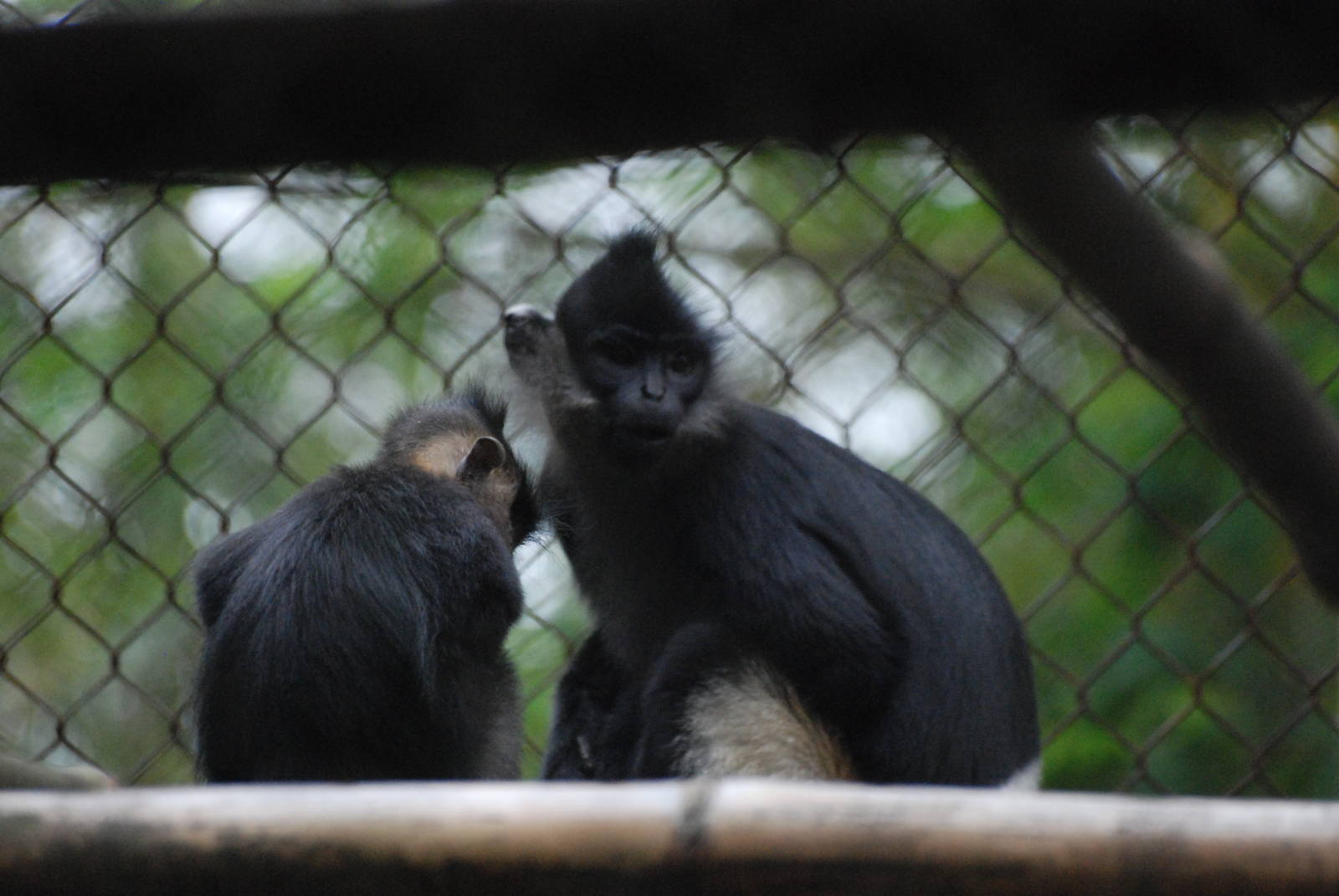
Delacour’s langur
This monkey is found only in an area of around 6,000 square kilometres (2,300 square miles) in northern Vietnam. The largest surviving population is believed to be in Van Long Nature Reserve in Ninh Binh where they inhabit open forests dominated by limestone karst. In fact, they only occasionally venture into the trees and often spend their days sleeping in limestone caves. Their numbers have declined dramatically. The total population fell by 20% between 1999 and 2004, now only 17 populations remain and less than 250 individuals survive in the wild.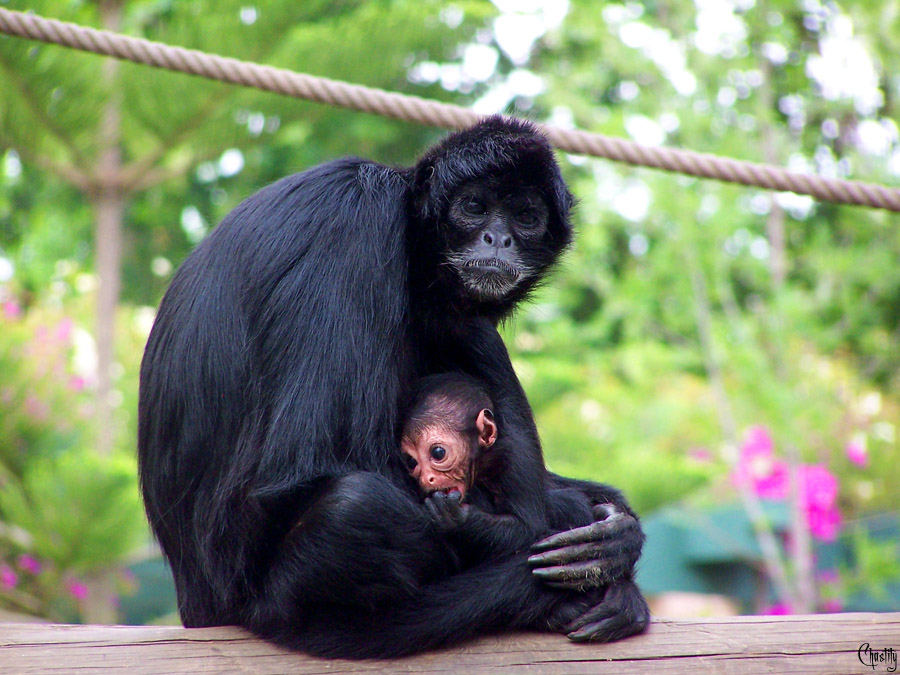
Brown-headed spider monkey
Spider monkeys travel and forage in the upper levels of tropical and subtropical humid forests and are rarely seen in the understory. The brown-headed spider monkey is found in Ecuador, Colombia and Panama. Population estimates are unknown but what is known is that their numbers are decreasing, by an estimated 80% over the past three generations. They are threatened by habitat loss and fragmentation, caused by deforestation, as well as hunting. The remaining populations have small distributions and are highly fragmented.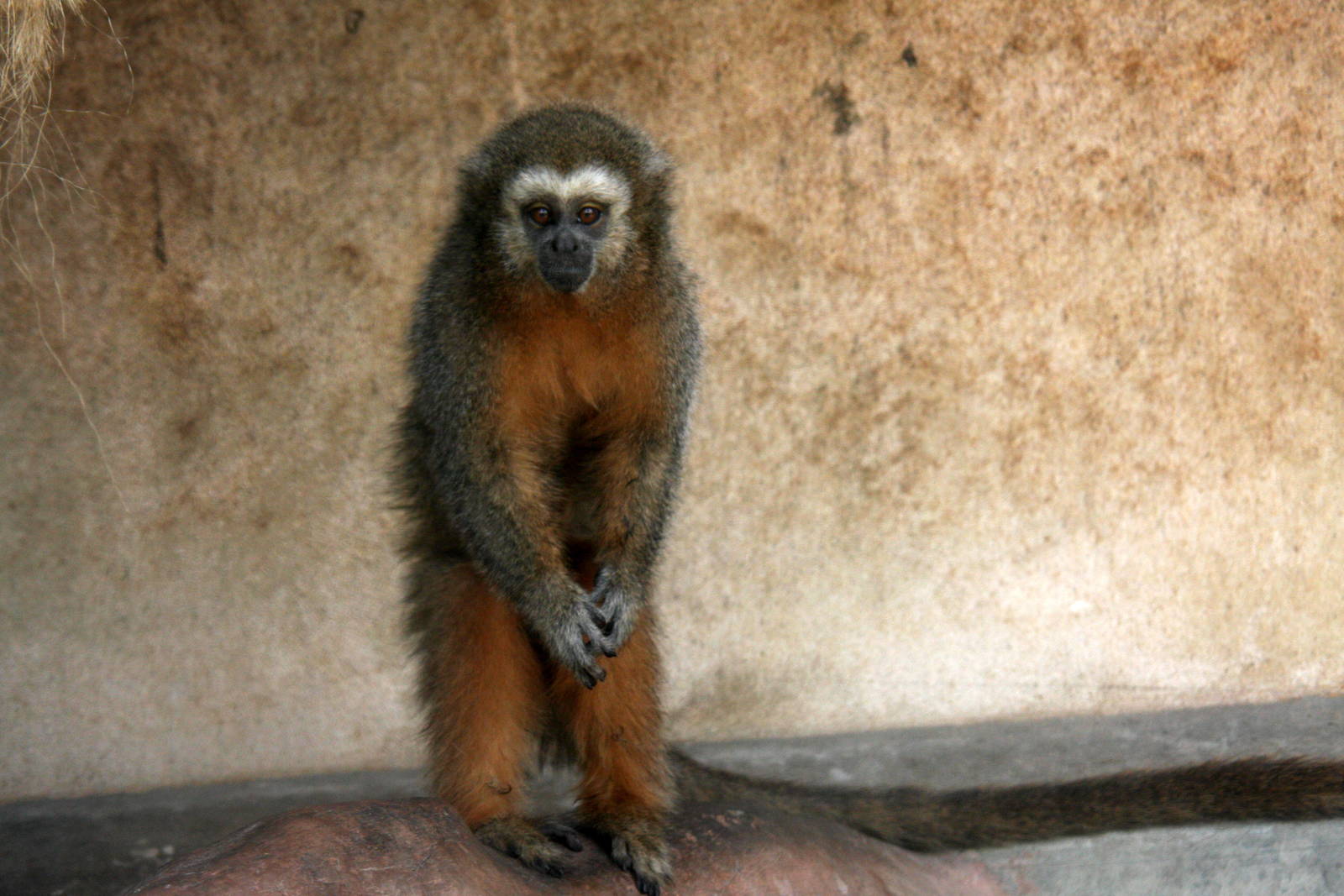
Rio Mayo Titi
This species of titi monkey is endemic to Peru, where it lives in dry woodland areas and eats predominantly fruit. However, 22% of its diet is insects and their high success rate in catching insects is important for their survival in times of scarce food availability. This is lucky, as the forests in which this monkey lives have declined by 40% over the last 20 years due to agricultural activities such as cultivation of rice and coffee, cattle ranching and selective timber extraction. As it is a fairly inconspicuous species, research and observation is difficult so their exact population number is unknown.
Pig-tailed langur
This distinctive species is a large, heavily built Old World monkey with a relatively short tail. It lives only on the Mentawai Islands in Indonesia in swamp forests and lowland rainforests, as well as primary forests on the interior’s hillsides. It is threatened mainly by heavy hunting and commercial logging, as well as conversion to oil palm plantations, forest clearing and product extraction by local people. Logging has actually increased hunting pressure because of improved access to remote areas by logging roads and tracks. It is a well-studied species, so a decline of 73-90% has been documented in the past 10 years, and the current population estimated to be 6,700-17,300 individuals.10 of the world’s most at-risk monkey species
By Alex Taylor
Tags: africa, asia, Bioko Island, bonaire, brazil, Brown-headed spider monkey, cat ba, Colombia, congo, conservation, Delacour’s langur, Ecuador, endangered species, Equatorial Guinea, golden-headed langur, Grey-shanked douc, Jequitinhonha River, Kaapori capuchin, monkeys, Niger River Delta, nigeria, Northern brown howler, Panama, Pennant’s red colobus, Peru, Pig-tailed langur, primates, Rio Mayo Titi, roatan, South America, Tonkin snub nosed monkey, vietnam

